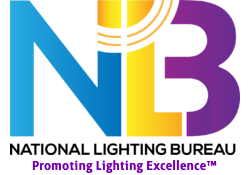Case Histories: Multi-Family Residential
Illuminating Concept: Lighting Can be a Real Investment
by Richard V. Morse
Just what is the purpose of outdoor lighting? If your answer is something along the lines of, “To provide light,” you would not be alone. Many multifamily managers regard lighting as little more than a necessary evil; just another trap door at the bottom line. Unfortunately, this gloomy assessment is not too far off the mark. But that is not the fault of lighting.
Lighting is not installed to provide light. Instead, it’s installed for a far more specific reason, with an end in mind. The provision of light is merely a means to that end. For example, outdoor lighting at night helps enhance security. It denies vandals, thieves, and other “perpetrators” the darkness they need to operate undercover.
A reduction in vandalism and theft lowers maintenance and insurance costs. It can also reduce a property’s rent-roll-killing potential for bad publicity and word-of-mouth vilification. And from a curb appeal point of view, a well-illuminated apartment community appears safer than one that is not as well-illuminated.
Whether or not the better-illuminated property actually is more secure depends on a number of factors, not the least of which includes other security measures taken. Undeniably, however, outdoor lighting is the most obvious form of security there is. For that reason, shopping centers that enhance the illumination of their parking lots have reported significant increases in nighttime shopping, nighttime traffic, and nighttime sales, all of which lead to lower vacancy rates, more rental income, and increased property value.
And while we’re on that subject, how well-illuminated is your property’s outdoor lighting? Will prospects look at it and immediately sense that their cars will be secure? That they will not experience problems when walking from the parking lot to the entrance of the building?
It’s important to note that lighting installed for security reasons also helps enhance safety. In other words, the “villain” at night may not be somebody lurking in the bushes, but rather leaves that have fallen off a tree, creating a slipping or tripping hazard. Effective illumination makes these and a variety of other objects (fallen twigs, steps, etc.) more visible, thus reducing the likelihood of problems, some of which lead to nuisance suits, higher insurance rates, bad publicity, etc.
Are you concerned that safety/security lighting might give your community the appearance of a property in the midst of fighting a high crime problem? In some areas, that may not be bad. In others, the opposite could be true. It really doesn’t matter that much, however, because–through effective design–you can make your outdoor lighting do many things.
As an example, consider the case of Watergrove Apartments, a 142-acre community of 1,002 one- and two-bedroom apartments in Memphis. Developers invested a considerable amount of money in lighting that not only provides safety and security, but also, through effective design, enhances the attractiveness of the place considerably. Principally as a consequence of the new lighting, Watergrove stays open 90 minutes longer than its competition about 14 weeks each year, and prospects are thrilled by what they see.
In fact, because outdoor lighting at night can create effects that cannot be achieved during the day, Watergrove actually looks better in the evening. People looking about also see residents riding bicycles without fear of automobiles hitting them, because the roads are so well- illuminated. Vandalism is virtually nonexistent. And the complex pays less for security than many of its competitors, on a per-unit basis, simply because everything can be seen so well at night. In fact, it can easily be said that Watergrove’s outdoor lighting actually turns the community into an advertisement for itself at night.
Another point to consider is that effective lighting can actually add space to a community that otherwise might not exist. For example, lighting can permit people to use grounds that otherwise would be unused in the evening. It can help keep a pool a social center all summer long. It can make tennis available in the evening. And because of the nature of lighting, these amenities very often are noticed more in the evening than they would be in the day.
So what’s the purpose of lighting? In fact, the purpose is to support business objectives you want to achieve. This does not mean that, suddenly, the cost of lighting doesn’t matter or that energy-efficient no longer has a place. In fact, you always want to rely on the most efficient lighting possible. Just realize that efficient lighting is not particularly effective if it does not do what you want it to do or what it could do. In essence, if you’re going to invest in a lighting system and continue to pay for its operation, you want to derive maximum benefit–what the National Lighting Bureau calls High-Benefit Lighting®. In order to achieve it, you have to learn somewhat more about what lighting can do for you, and that’s the Bureau’s purpose.
Established more than 20 years ago, the Bureau is sponsored by lighting system manufacturers, national trade associations, and agencies of the federal government to give decision-makers important facts about lighting. The information is not designed to turn you into “an instant expert.” Rather, its purpose is to help you work more effectively with those you rely on to design new systems or enhance existing ones.
Reprinted from Apartment Management Magazine, May 1998. Published by Apartment News Publications, Inc.
